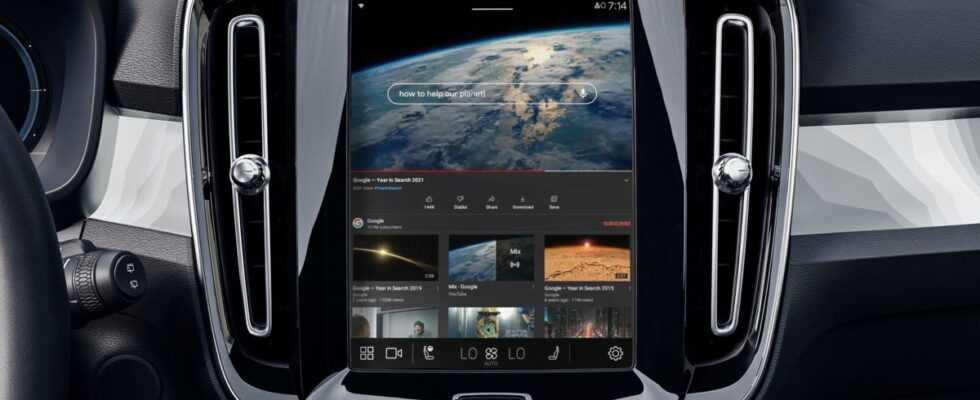Volvo offers a central screen running Android Automotive on some of its models. It will soon be possible to download the YouTube application from the latter and interact with your car via the Google Assistant.
When traveling in an electric car, the breaks at the charging stations can be long. Electric Volvo owners should therefore be delighted to learn that the manufacturer is going to integrate YouTube into its vehicles, whose central screen runs on Android Automotive, the Google OS dedicated to the automobile.
Thus, owners of Volvo electric cars (XC40 Recharge and C40 Recharge), or even XC60 and V90 year 2022, will be able to download the video application from Google. The rest of the range is not affected, because their central screen works under a homemade OS.
YouTube will be downloadable from the Play Store, like many other apps available on Android Automotive. Video viewing will only be possible when stationary and Internet connection is provided by an unlimited plan offered for four years after purchase of the vehicle.
Volvo is also announcing the arrival of third-party applications, such as Sygic and Flitsmeister for navigation, ChargePoint and PlugShare for charging, SpotHero and ParkWhiz for parking.
Note that Tesla already offered YouTube on board its cars, in the Tesla Theater, among other streaming services.
Controllable functions from Google Assistant
Volvo cars equipped with Android Automotive already took advantage of the Google Assistant. From now on, it will be possible to control certain functions of your car from another device integrating the voice assistant (smartphone, speaker, etc.), such as heating or locking the vehicle. However, some sensitive functions, especially unlocking, will require two-factor authentication.
Finally, Volvo and Polestar announce a partnership with Qualcomm. Thus, the next electric cars from manufacturers will be based on Snapdragon Cockpit Platforms technologies. Their infotainment system, still based on Android Automotive, will therefore be twice as fast.
